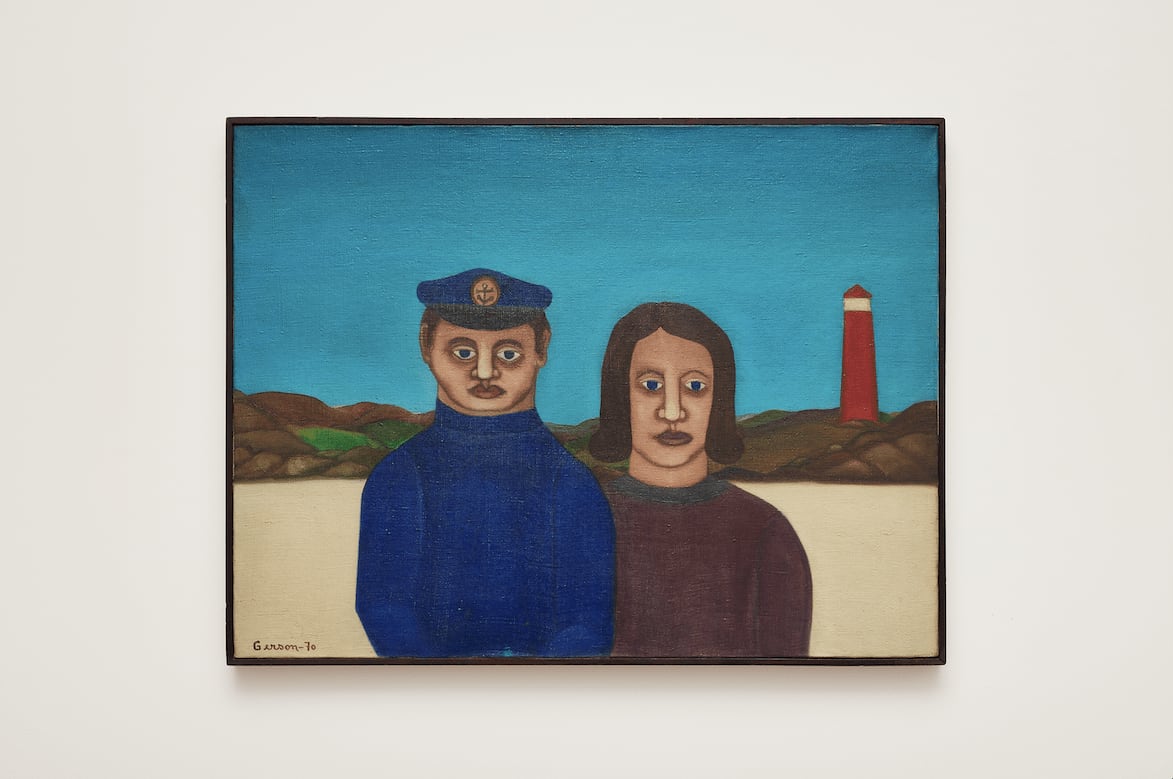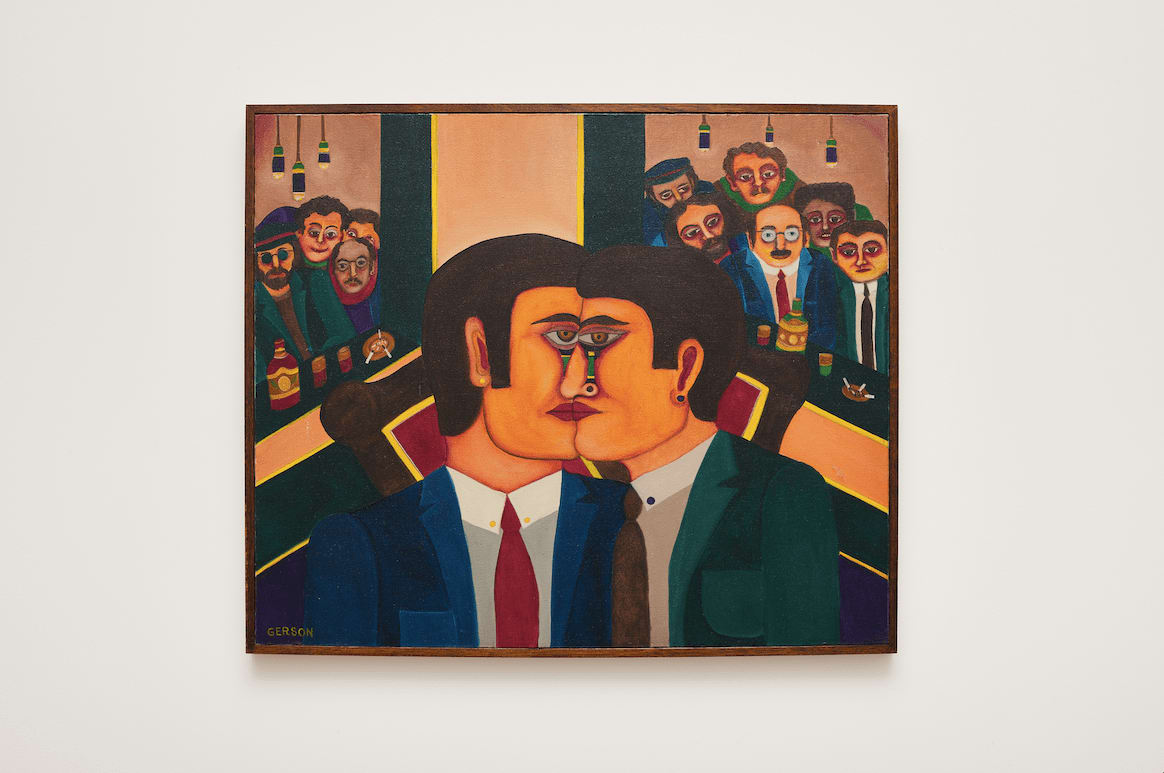Elza & Gerson: Cada indivíduo é um universo: Texts by: Luiz Fernando Pontes e Tomás Toledo
ELZA & GERSON: EACH INDIVIDUAL IS A UNIVERSE
Tomás Toledo
The monographic duo exhibition of the artist couple from Pernambuco Elza O. S. (1928, Recife - 2007, Rio de Janeiro) and Gerson de Souza (1926, Recife - 2008, Rio de Janeiro) presents a panoramic selection of their body of work.
The show is linked to one of the pillars of the gallery’s program, which focuses on repositioning, exhibiting and critically discussing artists who have worked outside the traditional art circuits and who, often self-taught, have been marginalized by modernism, art critics, museum curatorial programs and the market.
There is a peculiar movement of attraction and repulsion in the history of modern Brazilian art concerning the works of so-called “popular art,” a term imbued with aesthetic, cultural, and social prejudices, though not as frivolous as the derogatory and reductionist “naif,” “primitive,” “naïve,” and “brut” terms. If, on the one hand, various modern artists drank from the source of the popular, appropriating themes and aesthetics, on the other, they created a clear distinction between the status of the modern artist and the popular artist. This can also be seen in how critics and curators treated and presented this type of work, often with a stigmatizing slant, subtracting these artists’ intellectual and propositional agency.
The architect, designer, editor, and curator Lina Bo Bardi was an important figure in recognizing and repositioning artists and works of so-called popular art. She organized and curated exhibitions (at MASP, Solar do Unhão, and Sesc Pompeia)[1] on the theme and developed a rich critical production on the subject. In her book Tempos de grossura [Times of Rudeness], Lina Bo Bardi is categorical in her accusation against the cultural elitism that has systematically marginalized the popular:
A re-examination of the recent history of the country is called for. An account of “popular” Brazilian civilization is required, even if it is poor in the light of a higher culture. This account is not one of folklore, always paternalistically pampered by higher cultures, it is the account “seen from the other side,” the participating account. It is Aleijadinho and Brazilian culture before the French Mission. It’s the Northeasterner with his leather and empty tins, the inhabitants of the villages, the Black and the Indian. A mass that invents, that produces a contribution that is indigestible, dry, hard to swallow.[2]
With Lina Bo Bardi's propositions on the horizon, Elza and Gerson's work, a Northeastern couple who migrated to Rio de Janeiro looking for better working conditions, is not presented here in this exhibition through the lens of "popular art," but rather by positioning them as artists empowered by their poetics and practices, carrying a thoroughly genuine body of work that presents their individual world views.
Elza & Gerson: each individual is a universe brings into dialogue paintings from the artist couple 54 years after their last exhibition together, at Galeria Oca, in Rio de Janeiro, in 1970. The title of the show borrows a phrase that Gerson used to write on the back of his paintings and which sets the tone for the curatorial approach, focusing on the multiple and diverse ways of existing narrated in the paintings of the two, which depict Rio's bohemia and everyday life in the city; carnival scenes and religious figures; as well as compositions with a dreamlike and surreal tone that are divided into the following sections: surrealism; carnival scenes and popular manifestations; brothel and bohemia; religious figures; and portraits.
Escaping the stereotype of so-called popular art as an artistic work devoid of intellectual propositions and lacking in political and critical awareness, Gerson and Elza's paintings reveal just the opposite. In his paintings, Gerson addressed scenes from Rio's bohemian life with a great deal of freedom, bringing up themes of sexuality, such as prostitution, in a non-reductionist way, providing pictorial and emotional complexity to his characters, as we can see in the exceptional paintings Travesti, from 1967, and A novata, from 1965.
As for Elza, she presents us with a view from a woman's perspective, in which themes such as marriage and the domestic environment are explored in paintings that are often dreamlike and surreal in tone. Her stylized brides refer to her youthful frustration of not being properly dressed as a bride when she married Gerson; they were married in a hurry in the context of moving to Rio de Janeiro, which reveals aspects of social and cultural conventions that are installed, often violently, in the female imaginary.
Translation:
Alessandra Duarte
[1] On this history of exhibitions, see: TOLEDO, Tomás. “Os museus populares de Lina Bo Bardi”. In: PEDROSA,Adriano; GONZALEZ, Julieta; ESPARZA, José & TOLEDO, Tomás(orgs.). Lina Bo Bardi: Habitat. São Paulo: MASP, 2019.
[2] BARDi, Lina Bo. “Civilização do Nordeste”. In: SUZUKI, Marcelo (org.). Tempos de grossura: o design no impasse. São Paulo: Instituto Lina Bo e Pietro Maria Bardi, 1994, p. 12.


![Elza O. S., Sem título [Untitled], s.d [n.d]](https://artlogic-res.cloudinary.com/w_1600,h_1600,c_limit,f_auto,fl_lossy,q_auto/artlogicstorage/antoniabergamin/images/view/f06dfb337670dc739275f017ac288e84p/galatea-elza-o.-s.-sem-t-tulo-untitled-s.d-n.d.png)
![Elza O. S., Sem título [Untitled], 1964](https://artlogic-res.cloudinary.com/w_1600,h_1600,c_limit,f_auto,fl_lossy,q_auto/artlogicstorage/antoniabergamin/images/view/dd056018e91f40f587e13fb3ba55ab3fp/galatea-elza-o.-s.-sem-t-tulo-untitled-1964.png)



